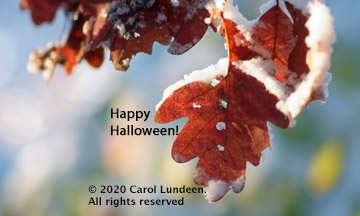Tag Archives: plants
TOUGH NATIVE PLANTS FOR ROUGH SEASIDE CONDITIONS – ROCKPORT, MA
Want beautiful, tough plants in your garden?
Carol visited Rockport, MA recently and shows us two tough-as-nails native plants for your garden that also provide habitat for wildlife.
FULFILL THE DREAM OF CREATING A POLLINATOR GARDEN
WHY NOT TURN YOU LAWN INTO A CERTIFIED HABITAT GARDEN FOR BUTTERFLIES, BEES, BIRDS?
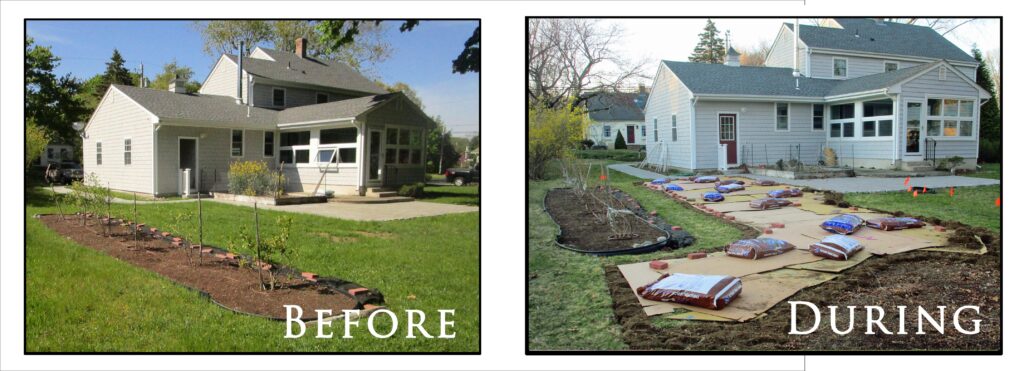 We’re helping a homeowner in Seekonk, MA fulfill her dream of turning most of her lawn into pollinator habitat. Collaborating through the iterative design, installation, and maintenance phases, the client herself has gotten earth under her fingernails and dirtied the knees of her jeans every step of the way.
We’re helping a homeowner in Seekonk, MA fulfill her dream of turning most of her lawn into pollinator habitat. Collaborating through the iterative design, installation, and maintenance phases, the client herself has gotten earth under her fingernails and dirtied the knees of her jeans every step of the way.
In the 2020 season we designed and installed two crescent-shaped ornamental landscape beds for MA native trees, shrubs and perennials. In the spring of 2021 we’re expanding upon last year’s work by tying in a larger portion of the back yard lawn. Because we have time on our side before the arrival of native plant meadow kits from the Native Plant Trust, we’re using the sheet composting aka lasagna method of turning lawn into garden beds.
Using flags and garden hoses, we laid out the shape of the new planting area, tweaked it, then committed to it by laying down two layers of heavy cardboard that came from local bicycle and appliance stores. The cardboard keeps sunlight from the grass to keep it from growing.
On top of the cardboard we’ll be laying down high quality drip irrigation hoses, aka pipes, that will tie into the existing lawn irrigation system. The pop-up sprinkler heads of the zone where this section of pollinator bed is going were removed and capped to preserve water, water pressure, and associated financial costs. Continue reading
Happy Halloween from Your Local White Oak Tree
SAVE THE DATE: 9/26 A FIELD DAY FOR MONARCHS!
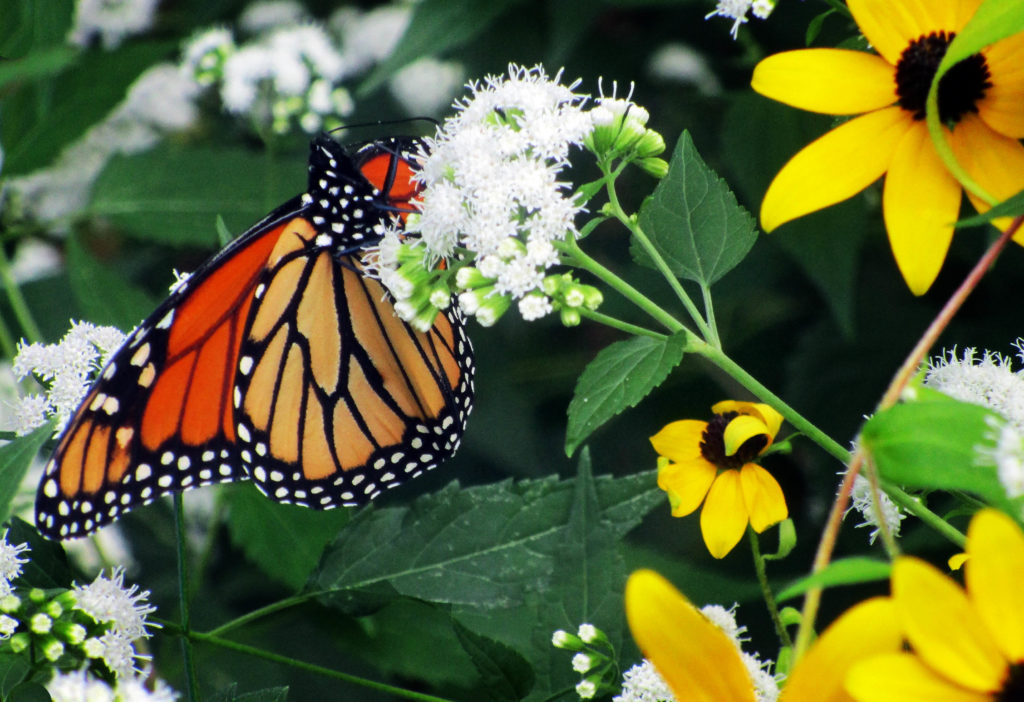 A monarch butterfly, Danaus plexippus, feeds on the nectar of white snakeroot flowers, Ageratina altissima, during its southern migration in a Sharon, MA garden on September 26, 2019. This pair of natives co-evolved since the retreat of the last ice age, and they depend on one another, and the entire web of life, for their continued existence.
A monarch butterfly, Danaus plexippus, feeds on the nectar of white snakeroot flowers, Ageratina altissima, during its southern migration in a Sharon, MA garden on September 26, 2019. This pair of natives co-evolved since the retreat of the last ice age, and they depend on one another, and the entire web of life, for their continued existence.
MONARCHS DELIGHT
September 26th was like a dream to me. I looked out the kitchen window while doing the dishes, and there were several monarchs in my gardens, all at one time. I’d seen one or two here and there this season, but never a parade of several at a time, like that day. I dropped the dishes and dashed out with my camera.
Later, on arriving at a Sharon, MA client’s gardens, Monarchs flew up every time I turned a corner on the mowed paths that snake around many beds where clouds of white snakeroot are now in bloom. I counted at least two dozen monarchs at least twice, and twice saw four monarchs on one snakeroot. It was like living and working in a dream where the monarchs have recovered and are robust in numbers again. It wasn’t a dream, but it was a remarkable parade of flight and feed that I shall not forget. Of course there were other native butterflies, like spangled frittilaries, and native bees, like Bombus sp., and other native plants in bloom.
THE BEST PLANTS FOR POLLINATORS: We can all make a difference in our yards, our gardens, our landscapes, our containers, one plant at a time, by design. Please join me doing so! These are the native plants that support the entire life cycle of the most butterfly and moth species:
Trees and shrubs:
- Oak trees – Quercus sp. such as white, red, pin, black, bear
- Willow trees – Salix sp.
- Black cherry trees – Prunus serotina
Herbaceous plants:
- Goldenrods – Solidago sp. such as blue-stem (axillary), seaside, bog, white, showy, downy, zigzag
- Asters – Symphyotrichum, Oclemena, and Aster sp. like New England, tartarian, heart-leaved, large-leaved, purple-stem, bushy, small white
- Milkweeds – Asclepias sp. like common, butterfly weed, swamp, poke, butterfly, clasping, green
Have fun, and let me know if you need a hand!
GARDEN REVOLUTION TALK IN SHARON
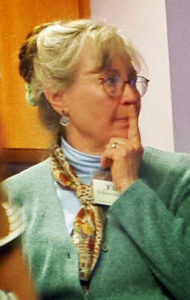
Beautiful historic gardens inspired us in the past. What inspires us to-day? And what does it mean for our backyards and our sense of self? Gardening teaches us to notice, to be patient, but the biggest lessons come when we embrace a new reason to care about what we plant and how we maintain our gardens. Ellen Schoenfeld-Beeks explains at her “Why We Need a Garden Revolution” talk at the Unitarian Church of Sharon on May 3rd. Ellen maintains an extensive mostly-native plant garden at her Sharon home, and also oversees the plantings and Memorial Garden at the church.
If you care about your chickadees, what does this range of numbers mean: 350 to 570? My environmental and social justice pal Ellen Schoenfeld-Beeks let us know at her “Why We Need a Garden Revolution” talk at the Unitarian Church of Sharon, MA on May 3rd. The answer is, 350 to 570 is the number of caterpillars one pair of chickadees needs every day to nurture their chicks from hatching to fledging. That’s just one pair of one kind of bird! Ellen inspired us to think and be mindful about every plant and practice in our gardens, and whether and how each helps or harms the natural systems that support all living things.
Ellen, who manages the church’s extensive gardens, showed examples of native plants at the church’s gardens and at her own home through the seasons, and how they support or harm our native pollinators, wildlife and local ecosystem at large. She even talked about plants she introduced to her gardens on purpose, only to find out years later that they were actually exotic invasive look-alikes of native plants. For example, she thought she was planting yellow marsh marigolds (Caltha palustris), but they turned out to be fig buttercups (Ranunculus ficaria, or, Ficaria verna), which are on the MA list of plants that are prohibited from sale.
After about three years they had spread like a spring carpet of yellow, in part because they aggressively reproduce by three different mechanisms. Once she realized her error, Ellen took responsibility and removed them by hand, an intensive but organic gardening practice. It took three seasons to bring their numbers to a reasonably manageable level.
Ellen also reminded us that one of the Unitarian Universalist Church’s guiding principles is respect for the interdependent web of all existence of which we are a part. She urged us to think carefully and learn about the impact of each of our plantings, as every plant in our landscapes matters, and your landscape supports, or doesn’t, those chickadees who need all those caterpillars every day to raise their young.
The design of her home garden, also in Sharon, features primarily native plants with mowed and gravel paths that sweep around her layered ornamental planting beds and stone walls, leaving the visitor wondering with curiosity what lies just past the next curve. Each of her beds have themed names, such as Mountain Laurel Hill, the Meadow and Old Rose Garden. Some of her favorite native plants are mountain laurel, Kalmia latifolia – obviously – with an area named just for them; apothecary rose, Rosa gallica, which though not a native has been cultivated by people since the MIddle Ages; and various goldenrods, which support at least 115 species of butterflies and moths.
GROW NATIVE MA ANNUAL PLANT SALE – JOIN ME JUNE 1st!
Help Massachusetts communities and wildlife thrive by joining me at the annual Grow Native Massachusetts Plant Sale. You’ll find over 2,000 plants covering 120 varieties, and I (and other experts) can help you make smart selections for the particular conditions of your planting area. Just look for me in a blue volunteer apron from 8-11. Shop early for best selection.
From 9-2:30 at the UMass Waltham Field Station at 240 Beaver Street, Waltham 02452, you may find:
- Perennials sorted by sun, shade and part-shade, and all types of soil conditions
- A large selection of evergreen and deciduous ferns
- Grasses and sedges, both cool and warm season
- Trees and shrubs at small sizes so you can take home in your car. Native trees and shrubs do the most to increase biodiversity and to enhance the wildlife value of your landscapes.
AND new for this year: sweet goldenrod (Solidago odora), bluestem goldenrod (Solidago caesia) and spotted beebalm (Monarda punctata)—custom grown just for this sale, as these are top native herbaceous plants for supporting the entire life cycles of our butterfly and moth pollinator friends, and a whole lot of bees’, too.
All plants are native to the eastern United States—the majority indigenous to New England
Learn more: https://www.grownativemass.org/programs/plantsale
Download a list of the species available at the 2019 Native Plant Sale
TWO CHICKADEES WALK INTO A BAR…IN A SHARON FOREST
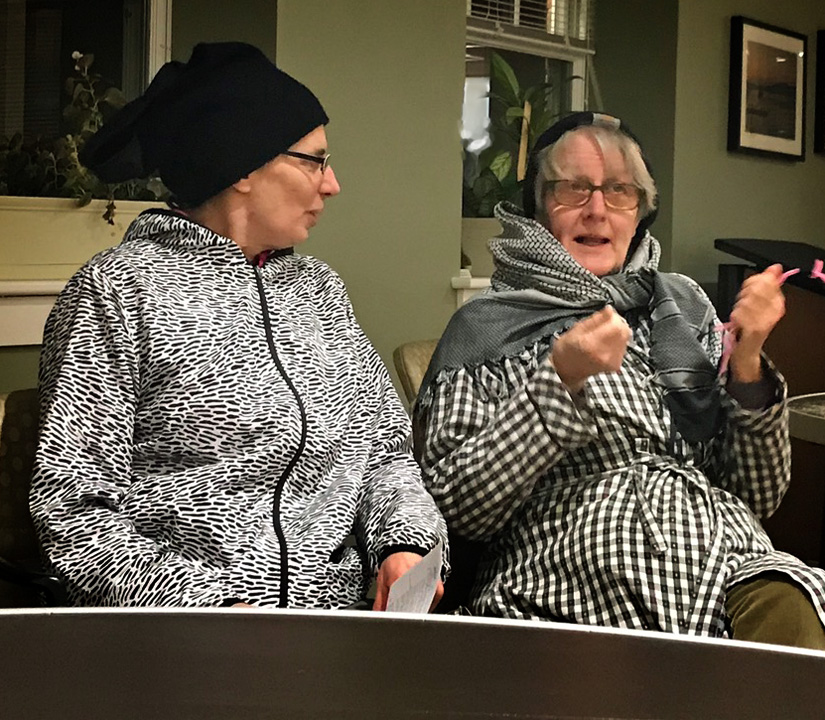
Sharon Garden Club January 2019 program “Wanted Dead: Not Alive!” presenters Carol Lundeen, left, and Brenda Minihan take the role of a pair of black-capped chickadees in a skit that tells the tale of how the introduction of beautiful exotic invasive plants by early American landscape designers has had terribly destructive results for native wildlife and our local, regional, and national natural resources. Ellen Schoenfeld-Beeks, not pictured, played the role of landscape designer “Fredericka” Law Olmstead in introducing the exotic plants to our country. Photo courtesy Marcia Podlisny.
.
GRADUATION DAY from the NEW ENGLAND WILDFLOWER SOCIETY!
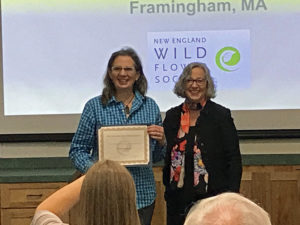
Carol Lundeen graduates from the New England Wildflower Society with an Advanced Certificate in Native Plant Horticulture an Design on November 3, 2018. Executive Director Debbi Edelstein presents Carol with her certificate.
One of my passions is lifelong learning, and another is to help people — and plants — who appreciate sustainable garden design and maintenance. I’m proud to have continued my studies at the New England Wildflower Society and earned an Advanced Certificate in Native Plant Horticulture an Design.
Each graduate had the opportunity to make a presentation about the required community service aspect of their certificate. I was proud to share my story of one of the two eyesore sites that I re-designed (and helped to install) at the Easton Town Offices that had been long overdue for a landscape makeover.

Easton MA Town Offices traffic circle landscape makeover by the Easton Garden Club. Several civic sites in Easton had become eyesores, and the Easton Garden Club collaborated with the community to sponsor a Design Challenge to spur interest in giving the sites a landscape makeover. Blueview Nurseries of Norton donated prizes. Garden club member and Garden-911 Boston owner Carol Lundeen re-designed this site, and it was installed with the town’s robust support.
I’m excited to continue to be a valuable resource in my community. While I currently serve as Horticulture Co-Chair with both the Sharon and Easton, MA garden clubs, I look forward to future opportunities to collaborate, create and educate people about smart, sustainable landscapes.
GROW NATIVE MA HOSTS INTERNATIONAL AWARD WINNING LANDSCAPE ARCHITECT MATTHEW CUNNINGHAM

International award winning landscape architect Matthew Cunningham presented at Evenings with Experts, on April 4th. Co-sponsored by Grow Native Massachusetts and the Boston Society of Landscape Architects, his design bring a sense of nature to his clients’ homes, creating a sense of privacy and wildness through the use of hard-working, beautiful native plants.
Last night, international award winning landscape architect Matthew Cunningham presented Revealing a Sense of Place at Grow Native Massachusetts’ Evenings with Experts talk at the Cambridge Public Library. The humble, approachable Matthew presented before-and-after profiles of several design projects he’s taken on, from a rocky, tide-swept cove in Maine to suburban West Newton and Brookline. In all cases, he borrowed concepts from nature, incorporating native plant communities into his designs, creating a sense of privacy and wildness for his clients.
The most thrilling part for me was his satellite photo of Cambridge, MA pointing out his first client there. The next slide showed that the neighbors have caught on, and now his clients are dotted all over town, creating a growing quilt of properties that support wildlife and pollinators, manage and filter rain water, and provide numerous other ecosystem services that only native plants can provide…including services for clients who disdain tree huggers and care primarily for aesthetics.
Keeping up with the Joneses now means people are investing in native plants, and it turns out that native plants don’t make a mess in your yard. They actually create a robust landscape system that hums on its own. This is the kind of news that inspires and delights me, and we could all use good news these days.

